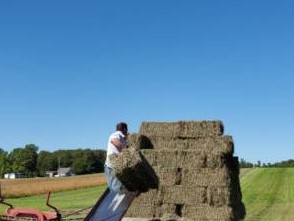By Tom Griffiths
2020 is just about in the books.
What a year it has been, with weather, equipment, crop price and trade challenges. And who would have thought that since the article that introduced me on this site, a global pandemic would impact everything we do?
As farmers, we continued nearly as normal in our daily farm duties. However, COVID-19 impacted mid-season crop prices, and it had a catastrophic effect on the beef, swine and dairy industries. All these prices have normalized to some extent. The situation thrust upon us was something new and unexpected, but now it’s just one more thing we will have to keep in mind as we make financial decisions in the future.

The weather in northeast Indiana, my region of the U.S. Midwest, has held up incredibly well. The corn that tested 28% moisture in early November stayed in the field until I finally harvested it on November 20. At that point, it tested 19% moisture, which is much better for drying and storing, and it yielded about 12 metric tons/hectare, or 190 bushels per acre, despite some wildlife and wind damage. I was pleased.
As always, I started selling hay in late November and early December – both large round bales and small square bales. The dry summer left me with 60% of my normal yield, which means good quality hay is in high demand. Prices at hay auctions have reached nearly $420/metric ton, or $460/U.S. ton. I have hay that would bring that price, but then loyal customers I have had for years would search elsewhere. With less hay than usual, I’m choosing to make the long-term financial decision to serve loyal customers and make sure I can feed my cattle, rather than charging top dollar.